Some Collective Memories of the Observatory - Visiting Ex-Director John Peacock
15 January 2013
At the beginning of the year, I would like to wish everybody a happy and healthy New Year!
This year the Hong Kong Observatory (HKO) will celebrate its 130th anniversary with a series of activities being planned, including the Open Day and launch of the 130th anniversary celebration ceremony in March, an exhibition in cooperation with the History Museum around the middle of the year, and production of a new TV documentary "Meteorology Series" jointly with the Radio Television Hong Kong. We will also publish a book entitled "Weathering the Storms: Under the Same Sky", with articles and photographs from colleagues, current and retired, and partners and friends of the Observatory. The above activities do not only aim at celebrating the birthday of the Observatory, but to also learn from the history of more than a century, especially the weather disasters that occurred before, so as to remind the public the importance of disaster prevention and mitigation work. Also, we hope that the impression and memories of colleagues, partners and friends will be able to form a set of collective memories for the Observatory. I will share with you some of these articles and reminiscences below and in the subsequent blogs.
In 2012, as our colleagues started to organize the 130th anniversary activities, I also began searching for historical information, hoping that we could supplement on top of what is already known. In the process, I got acquainted with some friends and scholars with knowledge of the history of Hong Kong, and had the opportunity to meet with a number of long-retired colleagues. They include Professor P. Kevin MacKeown[1] , who taught me physics at the University of Hong Kong - he was invited to deliver a talk at the Observatory on 24 August 2012 about his research findings on our early history. He told us that the establishment of the Observatory was much related to the disastrous typhoon in 1874. He also helped us better understand about our first two directors Dr William Doberck and Mr Frederick Figg, for example, Director Doberck sadly retired and left the Observatory due to the inability of forewarning the calamitous typhoon in 1906.
And when I first met our ex-Director John Peacock in November 2012, I also got to know some untold stories of the Observatory.
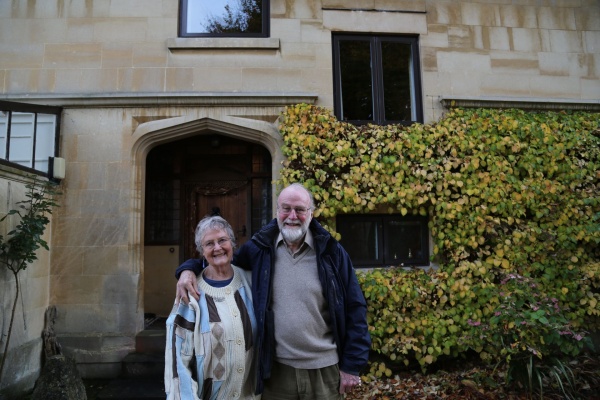
Figure 1Ex-Director John Peacock and Mrs Diane Peacock photographed together
in front of their house in Bath, England.
Mr Peacock was the last director coming from England. He joined the Observatory in 1950, succeeded Mr Gordon Bell as director in 1981, and retired in 1984. After attending the World Meteorological Congress in Geneva in late-October, I took the opportunity to take a two-day leave to visit him in Bath, England. At an age of 85, he was still very healthy and even drove together with his wife Diane to pick me up at the railway station. It was really touching. It was also a treat for me as I went through his photograph collections and heard him telling the stories behind these valuable pictures! Even though it was a short stay at his home, I tried my best to gather some interesting bits and pieces of the past for sharing with everybody.
First of all, I found that Mr Peacock might be the director from the recent generations who hoisted the largest number of the No. 10 Hurricane Signal! The No. 10 of Shirley in 1968, Rose in 1971, Hope in 1979 and Ellen in 1983 were all handled by him either as director or as acting director. He has also kept a number of private photographs showing the damages of Hope and Ellen. After him, only Dr Lam Hung-kwan and I had the opportunity to issue the No. 10 Hurricane Signal due to York in 1999 and Vicente in 2012 respectively.
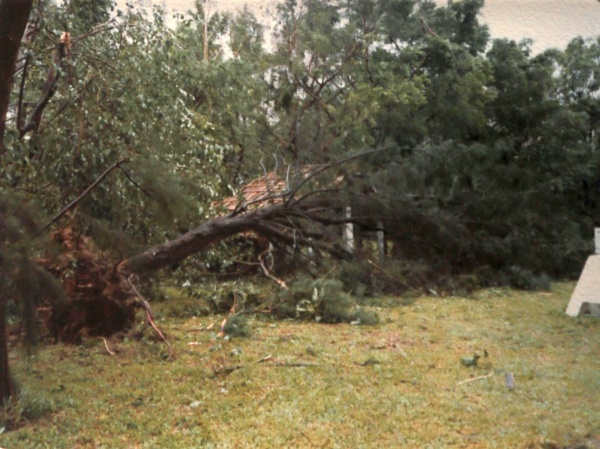
Figure 2A big tree at the Observatory Headquarters was fallen during the hit of Typhoon Ellen
in 1983, nearly fell on top of the temperature shed.
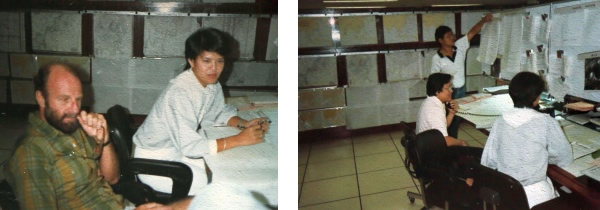
Figure 3Mr Peacock (left) handling Typhoon Ellen at the Central Forecasting Office in 1983,
also shown in the photographs include Mrs Elaine Koo (left) and
Mr Robert Lau (right - in the middle) who have both retired.
There are many other interesting photographs in Mr Peacock's albums. I have selected a few to share with you here.
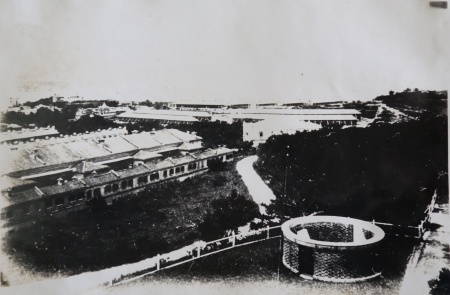
Figure 4An early photograph from the Observatory looking southwest: buildings on
Knutsford Terrace could be seen on the left, (could you also locate
the first-generation time ball tower near the Marine Police Station ?) the
circular structure appearing on the lower right is not yet identifiable
from the Observatory's records as this photograph belongs to
rather early years.
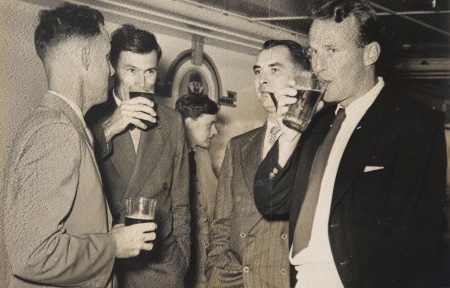
Figure 5An early gathering of colleagues: (from left to right) Colin Ramage[2],
Frank Apps, Commander Dennis Rowe, Royal Navy and John Peacock.
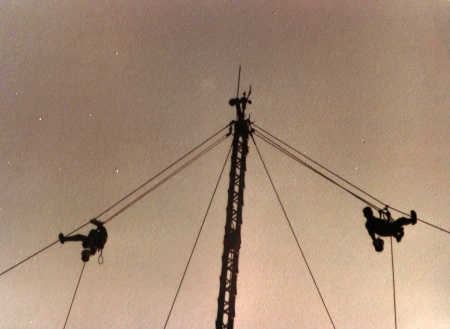
Figure 6Technicians (known as riggers) working at height to maintain anemometers
in the early days, rather similar to trapeze acts in circus performance.
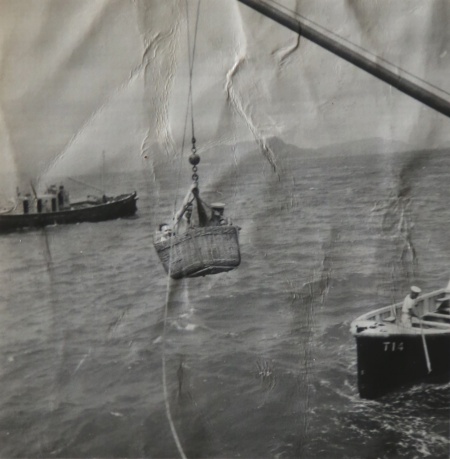
Figure 7In the early days, Observatory's staff working on Waglan Island sometimes
needed to be lifted in a basket from the boat to land on
the island, which was a rather exciting maneuver.
That's all for now. I will share more with you next time.
CM Shun
References:
[1] Professor MacKeown was also author of the book "Early China Coast Meteorology: the Role of Hong Kong".
[2] Ramage was also author of the book "Monsoon Meteorology".
This year the Hong Kong Observatory (HKO) will celebrate its 130th anniversary with a series of activities being planned, including the Open Day and launch of the 130th anniversary celebration ceremony in March, an exhibition in cooperation with the History Museum around the middle of the year, and production of a new TV documentary "Meteorology Series" jointly with the Radio Television Hong Kong. We will also publish a book entitled "Weathering the Storms: Under the Same Sky", with articles and photographs from colleagues, current and retired, and partners and friends of the Observatory. The above activities do not only aim at celebrating the birthday of the Observatory, but to also learn from the history of more than a century, especially the weather disasters that occurred before, so as to remind the public the importance of disaster prevention and mitigation work. Also, we hope that the impression and memories of colleagues, partners and friends will be able to form a set of collective memories for the Observatory. I will share with you some of these articles and reminiscences below and in the subsequent blogs.
In 2012, as our colleagues started to organize the 130th anniversary activities, I also began searching for historical information, hoping that we could supplement on top of what is already known. In the process, I got acquainted with some friends and scholars with knowledge of the history of Hong Kong, and had the opportunity to meet with a number of long-retired colleagues. They include Professor P. Kevin MacKeown[1] , who taught me physics at the University of Hong Kong - he was invited to deliver a talk at the Observatory on 24 August 2012 about his research findings on our early history. He told us that the establishment of the Observatory was much related to the disastrous typhoon in 1874. He also helped us better understand about our first two directors Dr William Doberck and Mr Frederick Figg, for example, Director Doberck sadly retired and left the Observatory due to the inability of forewarning the calamitous typhoon in 1906.
And when I first met our ex-Director John Peacock in November 2012, I also got to know some untold stories of the Observatory.

Figure 1Ex-Director John Peacock and Mrs Diane Peacock photographed together
in front of their house in Bath, England.
Mr Peacock was the last director coming from England. He joined the Observatory in 1950, succeeded Mr Gordon Bell as director in 1981, and retired in 1984. After attending the World Meteorological Congress in Geneva in late-October, I took the opportunity to take a two-day leave to visit him in Bath, England. At an age of 85, he was still very healthy and even drove together with his wife Diane to pick me up at the railway station. It was really touching. It was also a treat for me as I went through his photograph collections and heard him telling the stories behind these valuable pictures! Even though it was a short stay at his home, I tried my best to gather some interesting bits and pieces of the past for sharing with everybody.
First of all, I found that Mr Peacock might be the director from the recent generations who hoisted the largest number of the No. 10 Hurricane Signal! The No. 10 of Shirley in 1968, Rose in 1971, Hope in 1979 and Ellen in 1983 were all handled by him either as director or as acting director. He has also kept a number of private photographs showing the damages of Hope and Ellen. After him, only Dr Lam Hung-kwan and I had the opportunity to issue the No. 10 Hurricane Signal due to York in 1999 and Vicente in 2012 respectively.

Figure 2A big tree at the Observatory Headquarters was fallen during the hit of Typhoon Ellen
in 1983, nearly fell on top of the temperature shed.

Figure 3Mr Peacock (left) handling Typhoon Ellen at the Central Forecasting Office in 1983,
also shown in the photographs include Mrs Elaine Koo (left) and
Mr Robert Lau (right - in the middle) who have both retired.
There are many other interesting photographs in Mr Peacock's albums. I have selected a few to share with you here.

Figure 4An early photograph from the Observatory looking southwest: buildings on
Knutsford Terrace could be seen on the left, (could you also locate
the first-generation time ball tower near the Marine Police Station ?) the
circular structure appearing on the lower right is not yet identifiable
from the Observatory's records as this photograph belongs to
rather early years.

Figure 5An early gathering of colleagues: (from left to right) Colin Ramage[2],
Frank Apps, Commander Dennis Rowe, Royal Navy and John Peacock.

Figure 6Technicians (known as riggers) working at height to maintain anemometers
in the early days, rather similar to trapeze acts in circus performance.

Figure 7In the early days, Observatory's staff working on Waglan Island sometimes
needed to be lifted in a basket from the boat to land on
the island, which was a rather exciting maneuver.
That's all for now. I will share more with you next time.
CM Shun
References:
[1] Professor MacKeown was also author of the book "Early China Coast Meteorology: the Role of Hong Kong".
[2] Ramage was also author of the book "Monsoon Meteorology".